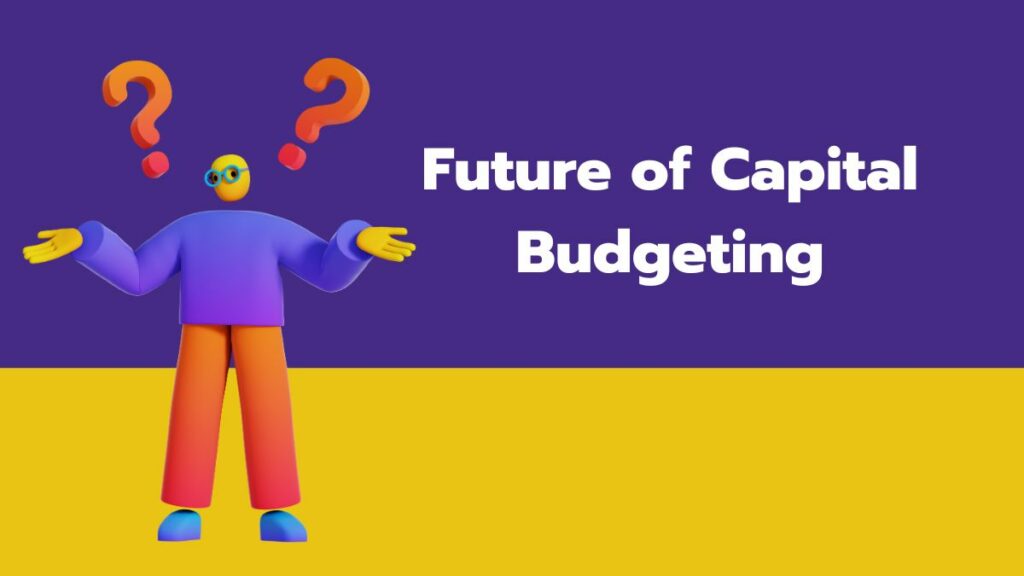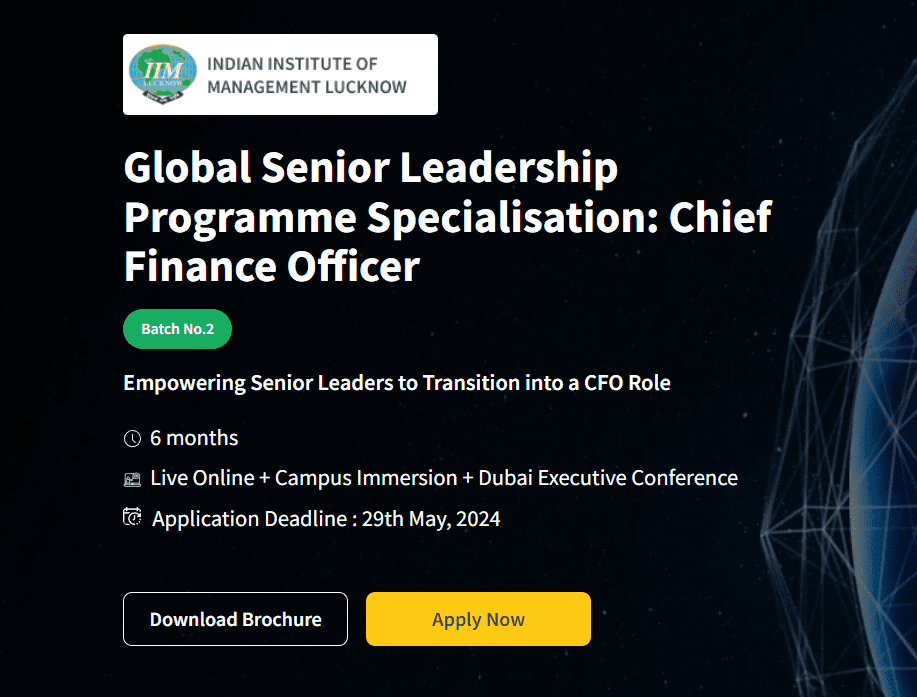Capital budgeting is, in fact, the lifeblood of corporate finance. It is one of the most essential processes that help firms make the right decisions on long-term investments in ventures that maximise returns. With the advent of the technological revolution and the rapid changes in financial outlooks, capital budgeting has been revolutionised with much need for sustainability. Some trends will affect companies' decisions while trying to stay ahead in the same market.
Capital Budgeting in the Future: Trends and Innovations of 2025 and Beyond. In this article, we will take you into the future of capital budgeting, where trends and innovations influence its trajectory in 2025 and beyond. We get immersed in the emergent technologies, the increasing weight that sustainability will carry, and how the decision-making frameworks change in response to new challenges.
What is Capital Budgeting?
Capital budgeting is investment appraisal, which is the process of business planning investment decisions into long-term investment analysis. They will try to find out whether expanding operations, acquiring new machinery, or producing a new product is profitable. Such analysis helps companies decide, as making a wrong decision may hinder the company's future growth.
Traditional capital budgeting is based on financial metrics such as NPV, IRR, and payback period. As we move forward, factors that influence capital budgeting decisions are growing.
Key Trends Shaping the Future of Capital Budgeting
The Integration of Artificial Intelligence (AI) and Machine Learning
One of the more dramatic trends affecting capital budgeting is the rising use of AI and machine learning to enhance decision-making. Such technologies allow business enterprises to analyse enormous volumes of data, identify patterns, and make accurate predictions with the help of proper mathematical computations regarding investment returns in terms of possible financial performance. Thanks to the use of AI, several different investment scenarios may be evaluated, which reduces human mistakes to a great extent, giving way to much more data-based company decisions.
For example, machine learning algorithms would become more accurate and precise in estimating cash flows by capturing market trends, customer behaviour, and other macroeconomic factors. Such accuracy should reflect better investment decisions and capital allocation.
Data-Driven Decision Making
As businesses become data-centric, this will increasingly expand data's role in capital budgeting. In 2025 and after that, big data analytics will most likely dominate as the chief input to assess any investment opportunity. Instead of making decisions based solely on financial metrics, decision-makers will be constrained to consider a multiplicity of factors, including prevailing market conditions, customer demand, and competitive dynamics.
Data-driven tools will likely help risk quantify more effectively. Ultimately, all these data sources combine to give a clearer view of potential outputs besides delivering better results and a clearer view of what might happen with a project's outcomes. Data can be meshed into real-time capital budgeting processes to make decisions with the freshest information possible. This will make businesses more agile in investment strategies.
Sustainability and ESG Considerations
Environmental, Social, and Governance (ESG) factors have gained increased importance in capital budgeting decisions. Companies are reviewing how they spend their capital as investors and customers increasingly focus on sustainability. Sustainable investing is no longer a niche but a mainstream business.
Capital budgeting by businesses in the future will undoubtedly take into account ESG. This might mean incorporating projects' environmental impact, social responsibility, and good governance into the investment process. Project propositions that align with this mindset are likely to be approved since companies today do not wish to sully their image in the public and regulatory standards.
Higher Use of Scenario Analysis and Stress Testing
Capital budgeting would consider the volatile global economy through scenario analysis and stress testing. It will enable companies to know the kind of potential economic scenarios - a recession, the disruption of supply chains, and regulatory changes, to name a few that might affect investments.
A business can make much more informed decisions and prepare for adverse conditions by testing projects against many possible outcomes. This will help minimise risk and maximise returns when business scenarios are unpredictable.
Blockchain and Decentralised Finance (DeFi)
First, blockchain and Decentralised Finance (DeFi) are the new entrants that are beginning to transform capital budgeting. Blockchain provides an immutable ledger that can ease complex financial transactions and increase the transparency involved in investment processes. With DeFi, firms can access new, decentralised financial markets, which can change how a firm seeks capital for its projects.
What will be expected is a future of blockchain-based capital budgeting platforms where the business can track investment decisions securely and verify them, reducing fraud and increasing transparency. This factor will be increasingly widespread as blockchain continues to grow.
Risk Management and Capital Allocation
Capital budgeting processes must take up more sophisticated risk management strategies to consider the complexity and interdependence of such businesses. In the upcoming decade, namely 2025, companies should look into not only the traditional financial risks but also address non-financial risks in the shape of climate change, cyber threats, and geopolitical instability.
This would unlock new capital allocation models, aligning financial performance with risk mitigation. Companies must prioritise projects that could endure external shocks and provide long-term resilience, even under uncertainty.
The Role of Cloud-Based Financial Tools
The other trend which is transforming capital budgeting is migration to cloud-based financial tools. The better provision of flexibility and collaboration, in combination with open access to real-time financial data, makes companies opt for these platforms. Various cloud-based tools allow teams to work together efficiently, regardless of location, making assessing investments and resource management easier.
Besides facilitating collaboration more effectively, cloud tools can also support more precise forecasting and analysis, therefore allowing companies to better understand the long-term value of their investments. That is a trend that will be strengthened in the coming years as cloud technology becomes even more complex and widespread.
Automated Capital Budgeting Systems
Of course, automation is not exclusive to AI. Automated capital budgeting systems have become very popular because they reduce decision-making time. Such systems can include everything from preliminary project proposals to final approval, thus saving much time that would normally be needed to evaluate and clear investments.
Automating time-consuming tasks creates an opportunity for a business to free up time to focus more strategically on real management choices. The efficiency of results increases while, at the same time, the chances of human error decrease. Automation enables the assessment of more projects within the same day and capital allocation to the best opportunities.
Increasing Importance of Intangible Assets
Capital budgeting was mainly about tangible assets in the past, such as buildings, machinery, and infrastructure. Today, however, intangible assets greatly valued by users include intellectual property, brand value, and customer relationships. By 2025 and beyond, business investment decisions will also have to reflect these intangible assets.
The problem is with the value of such an asset, which would require a more subjective valuation. Firms would have to work on a new framework and methodology for determining the ROI on intangible assets during capital budgeting to recognise such an element.
Agile Capital Budgeting Frameworks
The future of capital budgeting could finally see an increasing trend of adapting to more flexible frameworks. Over time, capital budgeting has been a very formal process strictly bounded by timelines and guidelines. However, this is not the case in today's aggressive business environment, in which companies need to adjust faster than ever to market conditions.
Agile capital budgeting would ensure companies can review and change their investment strategies more quickly in light of new opportunities or threats. It cuts across dynamic fields such as technology and health care, where the playing ground constantly changes.
The capital budget in the future is going to be dynamic and transformative. As we step into 2025, things will be drastically different regarding changes in capital budgeting. Presented with increasing technological assistance, even more importance attached to sustainability, and the call for more nimble decision-making, businesses will stay ahead on these trends or lose out on the game.












